|
Some stuff just for funsies... In case you're wondering, there's no correlation between tweet length and favorites: Also, the average length of DN tweets have gotten longer in the last 4 years, with a decided uptick in April 2018. I thought that this might have been the result of Twitter increasing the cap on tweet length from 140 to 280 but that happened in November 2017. (Apologies for the crammed x-axis labels. Click on the figure to zoom in.) What about number of likes versus number of retweets? Ok that's weird. What if we zoom in on those values that are fewer than 500? So that initial weirdness indicates something kinda neat: if a tweet garners loads of "likes", it's not going to be retweeted. If it gets tons of retweets, it's not going to get many "likes." But maybe there's something to the year in which the tweet was produced? Nope nothing there either. So, weirdly, DN tweets, are either heavily liked or heavily retweeted but not both.
0 Comments
If you've ever wondered what Dostoevsky would listen to if he were into rave, then wonder no more!
Another quick post. Here's a plot of the top 10 partnerings by year. (Recall that R returns all values in cases of ties... hence why there are 13 accounts listed in the 2016 graph. Oh and if anyone knows how to order the x-axis in ggplot2 while employing facets, I would be eternally grateful for pointers. I tried everything I could think of and Google and nothing worked.) Some interesting things to see here. First, DN is partners in 2019 more frequently with philosophers of sex and gender (@Docstockk, @christapeterso, @rachelvmckinnon) -- or at least folks vocal in the debate online -- than in previous years. Second, among the top 10, with the exception of @sciam and @michaelshermer in 2018, there's no clear preference for one over another. I.e. within the top 10 accounts with whom DN partners, there's no one that is head and shoulders parterned with more than another. Third, no account is in the top 10 from year to year. The DN account doesn't consistently partner with one account over multiple years. One last plot: let's look at all partnerings for DN over the same stretch of time. Names of accounts are not included because they're unreadable. But it's still pretty neat to see the shape of each plot: Broken out by year, there's not the kind of long tail that we saw in the 1st post (except in 2018). But what is clear is that the DN account, over the last 4 years, engages with more accounts (2016 had 89 partners, 2017 had 162, 2018 had 221, and 2019 has 189 -- though keep in mind that the 2016 counts only go back to March because of query limits on Twitter's API). But there's still a subset of accounts each year that get partnered with more frequently than others, even though the most-partnered accounts change from year to year.
So there you are. We've looked at the folks the DN account responds to or mentions most over the last 4-ish years. This is going to be pretty short. I was curious if there was any correlation between the proportion of partnerings for accounts in the DN top 25 (see previous post) and the number of followers that they have. My hunch was that more followers mean more popular and thus more likely to get mentioned or tweeted at by the DN account. Again, a rich-get-richer kind of a thing. Here's the full top 25 (which actually comes to 32, since R includes multiple values in cases of ties). It's a bit tough to read but you can see in the top left corner @sciam with loads of followers and lots of the proportion of partnerings and everyone else clustered on the left. Let's get rid of @sciam to see if that clears things up. Ok the labels obscure things a bit. Once more without them. Aaaaaaand one more adding a regression line... The message is clear: there's little-to-no correlation between the ratio of partnerings and number of followers. My hunch was off the mark.
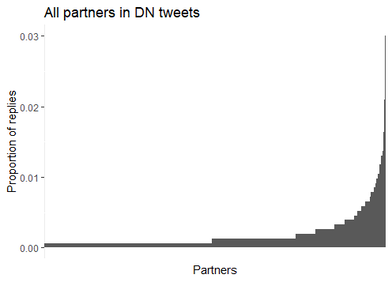 True confession: prior to grad school, I’d never heard of Leonard Cohen. Shocking as it might be, I’d made it 23 years without ever knowing who he was or what he did. One day, at some grad school get together thingy at the library, I was chatting with another 1st year philosophy grad student. He mentioned something about Leonard Cohen and I said, “who’s Leonard Cohen?” and I swear to all that’s holy I could hear the record scratch as he said, “you don’t know who Leonard Cohen is?” Every grad student in earshot looked on in horror. Now, some might try to recover from this social fumble. “Oh, LEONARD COHEN. Sorry I must have misheard you. Love the early stuff. Listened to it all the time back in the day.” If you think this is me, then clearly we haven't met. My new attitude, adopted on the spot in the foyer of the library, was: FUCK. LEONARD. COHEN. Fun fact: to this day, I haven’t wavered one iota. Any time Leonard Cohen is mentioned, I roll my eyes heaven-ward, give a great groan, and try to bring up some obscure band in an eternal and fruitless game of cultural one-ups-man-ship. BTW if you’re not listening to Yndi Halda, in particular their debut masterpiece Enjoy Eternal Bliss, are you even living? Another true confession: I didn’t talk to a lot of super famous people in grad school. I was married my 2nd year in, and had my 1st kid my 3rd year. I didn’t have any support from the university, so I adjuncted my ass off (nearly 4 dozen classes under my belt by the time I landed a TT position, thank you very much). That’s all to say that many of my friends and colleagues can recount stories with famous philosophers, using their first name to refer to them. (“Oh yeah I loved class with Jason. It was amazing when Sally was on campus to give a talk and they co-taught a seminar on society and justice. CHANGED MY LIFE.”) I changed a shit-ton of diapers and learned how to repair my 1990 Volvo station wagon in between grading rounds of intro papers. To former students: I’m sorry for any grease I got on your papers. I mention this because professional philosophy feels like a club where there are insiders and outsiders. Insiders get to refer to famous people by first name and tell silly stories about them. Outsiders smile politely. Social media — and the Interwebs in general — is, I think, one way that the playing field might get leveled. Hey you might not have been accepted to Rutgers or NYU but shit you can take a crack at things on Leiter’s blog and maybe get some recognition! I didn’t do this but I imagine others might. Two possibilities. (1) the Interwebs & social media are the great equalizer. Anyone who wants a shot to get to know a Big Shot can. (2) the Interwebs & social media follow something like a Matthew Effect. So which is it? Who gets talked about in philosophy social media? I was going to look at Leiter’s Twitter, but it’s set to private. I have no desire to friend-request him for the sole purpose of seeing who he @’s at. @DailyNousEditor, however, is a public account. I emailed Dr. Justin Weinberg (I can call you “Justin” now, right? We’re buddies. Oh the many silly things we’ve talked about and done…*). I wanted to run the idea past him of analyzing and blogging about the @DailyNousEditor account — hereafter referred to as ‘DN’. He kindly agreed and expressed interest in the results. I’m making this a multi-part post: the first is just looking at the folks with whom the DN account engages most frequently. I’m pretty sure that Justin is responsible for most or all the tweeting at the DN account. But rather than “Justin does this” or “Justin does that” I’m going to talk about what the DN account does and with whom it engages. Also, I’ll talk about accounts rather than people. The reason isn’t super philosophical. It just sounds less dickish to my ears to put things that way. Same content, less assholery. With that, let’s forge ahead. Small technical note: for this analysis, I used R 3.5.3 and the packages rtweet, tidyverse, tidytext, and ggrepel. The code (ugly as it is) will eventually go up on my Github: github.com/cslassiter. There’s nothing special about R 3.5.3; I just haven’t gotten around to updating to the latest version. DN has 15.7K followers (15,724 to be precise, as of today). Not as many as Nate Silver (3.7M) but way more than me (52). DN follows 415 accounts. There are 251 accounts in center of the Venn diagram of DN followers and following. So far, so good but not really all that interesting. At whom, exactly, does DN tweet most often? Do to this, we grab all the info we can for DN’s most recent 3,200 tweets (as of Sept 3, 2019 at 12:24 pm PDT). That’s what the Twitter API limits searches to. This takes us back to March 1, 2016. There are 90 variables, but I’m interested in: 1. When the tweet was created 2. To whom the tweet was a reply (if anyone) 3. Anyone mentioned in the tweet (if anyone) 4. Number of retweets 5. Number of “favorites” I’m collapsing (2) and (3) into a single value, “partners”. This captures both who is directly addressed as well as who is talked about. First let’s look at the structure of partnerings. (Oh, BTW I scaled the values to be relative to the total number of times someone was a partner. So the values on the left are the proportion of parternings to total partnerings.) This looks something like a Matthew Effect at work, but it's far from certain. The few who have lots of partnering may be benefiting from a "rich get richer" kinda thing. It's clear by the long leftward tail and sharp uptick on the right that a few accounts grab most of the partnerings while many others only grab a few. One account garners 3.0085023% of partnerings while 258 accounts get .006540222%. Now let's zoom in on the top 25 partners. A few interesting things here. First, of the top 25 partners for the DN account, most are partnered with less than 1% of the time. So while DN might partner with many accounts, none of them take up the lion’s share. So who are the lucky winners? @sciam, followed by @michaelshermer, and then @alixabeth. If you’re wondering what’s up with the first two, it’s that the DN account took Scientific American to task for this article by Michael Shermer...which, admittedly, is kind of a shit article. Populating the top 25 slots are academic groups/organizations (@kottke, @academicssay), philosophy groups/organizations/popularizers (@apaphilosophy, @HiPhiNation, @philosophybites, @epicciuto), folks who do comics for Daily Nous (@chaospet, @petemandik, @rachelkatler, @TanyaKostochka), and philosophers, both better and less-well-known (at least “less-well-known” to this philosopher of mind and epistemologist in the Inland Northwest USA — but then again see rant from above). They seem to fall into a few broad categories: Phil of sex/gender ContraPoints Docstockk Christapeterso rachelvmckinnon Academic famous (>5k followers) Keithfrankish Paulbloomatyale jtlevy DSilvermint Lastpositivist ErrorTheorist Zaranosaur ethicistforhire Other (<5k followers) Liaoshenyi rocza Mxmcadam FrueheNeuzeit danieljbrunson I don't know what pulls together the "Other" category. It’s a little odd that they make the top 25 despite not being as popular on academic Twitter as others. That's all for today. More analyses on this dataset forthcoming, most immediately breaking out the top partners by year. *We haven’t done any but I don’t make fun of your social life, DO I? |
About me
I do mind and epistemology and have an irrational interest in data analysis and agent-based modeling. Old
|

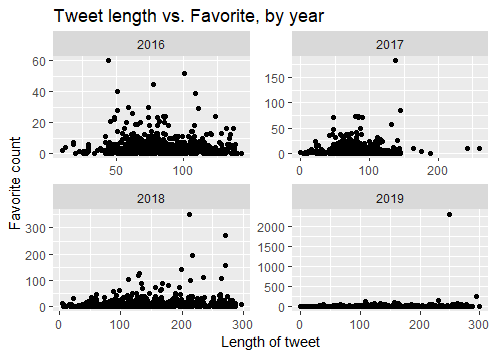
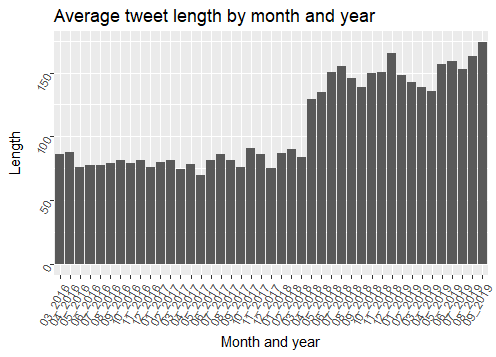
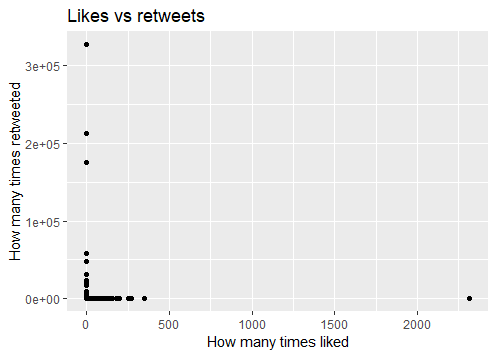
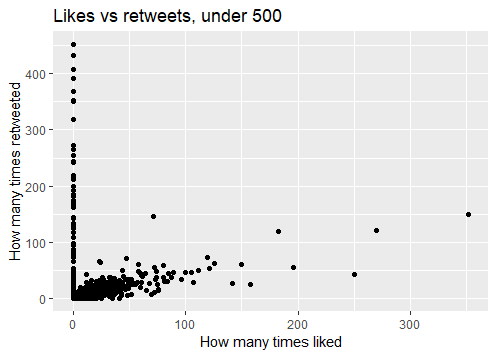
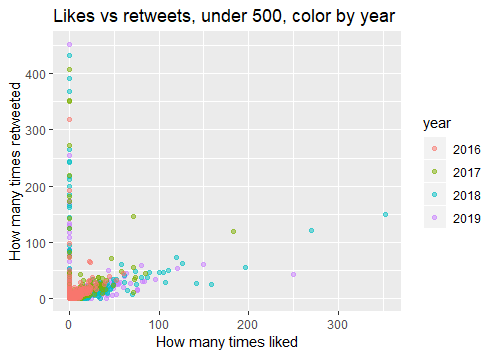
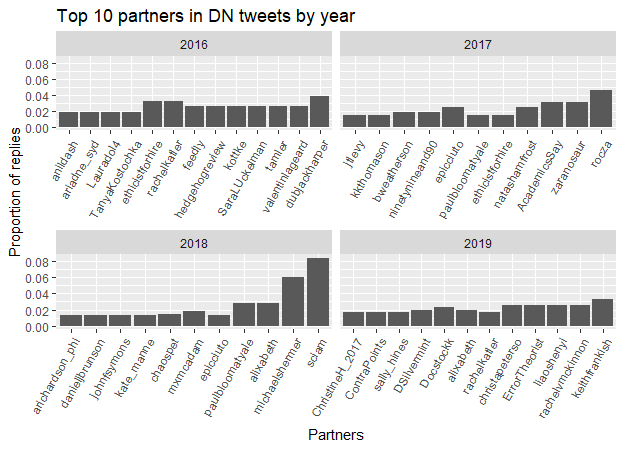
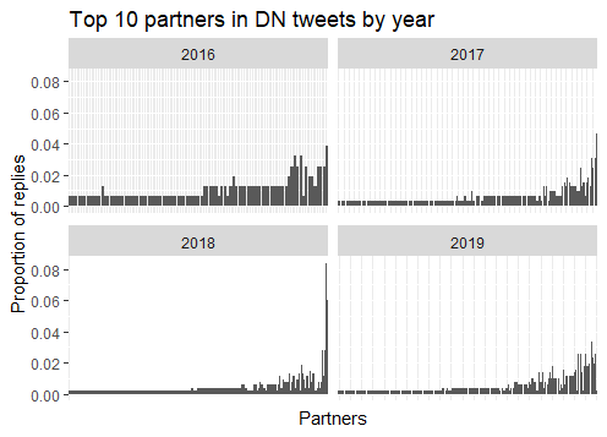
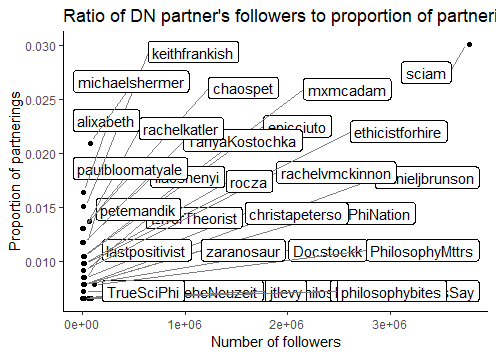
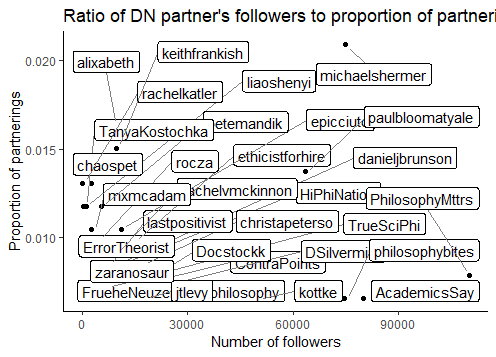
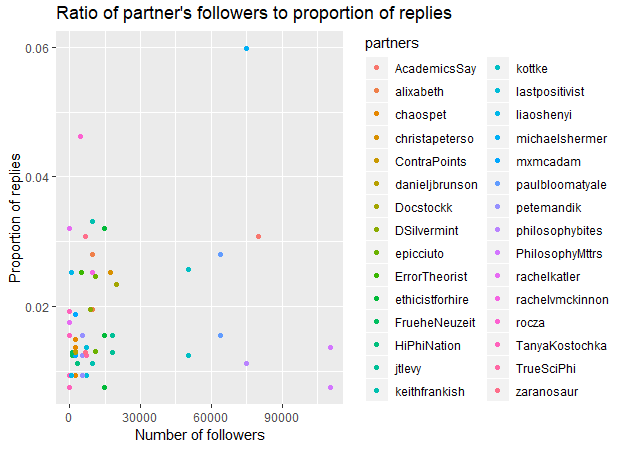
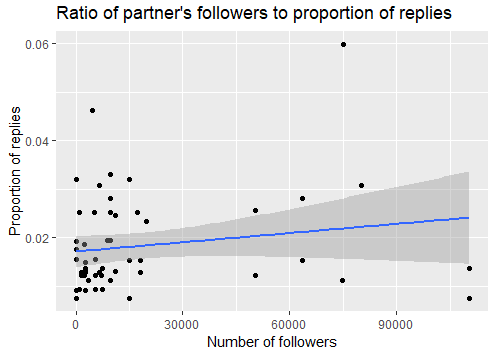
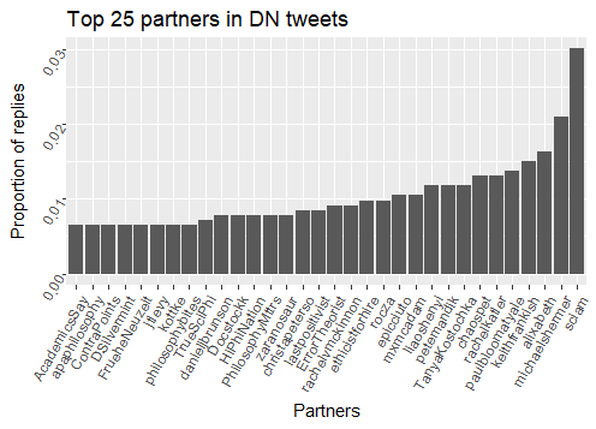
 RSS Feed
RSS Feed
